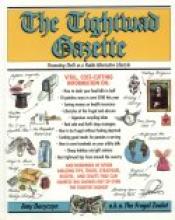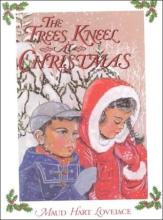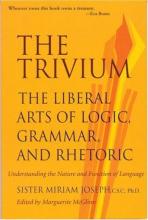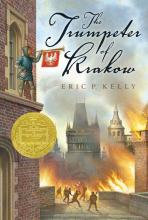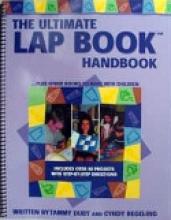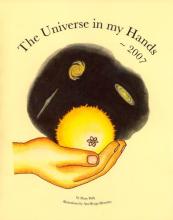No name
The Story of the Trapp Family Singers
I found this a really delightful and engaging book. Maria, who in not a professional writer and is writing in her second language, comes across with a style that is a little unusual, but very charming and personable. In many little details, the movie is surprisingly faithful to the book, but in other ways, it actually understates rather than exaggerates some of the amazing aspects of the story. This book also goes well beyond the scope of the movie, even when looked at chronologically. There are many reasons to recommend the book, but my favorite aspect of the book is how Maria comments and reflects (in a very Catholic way, may I add) upon the events surrounding her and her family - the providence of God in many parts of their lives, the importance of music in culture, her thoughts on the discipline of children, some of the terrible events and persons of Europe during World War II, and on and on. Although I was reading the book to myself (and there are many reflections of interest to Catholic mothers), there were many, many little fascinating and humorous stories within the story that I had to share with my husband and children.
The Strange Intruder
Originally published in Great Britain under the title The Strange Invader
The Sword of Clontarf
The Tightwad Gazzette
This book is available in either three individual volumes or a newer paperback compilation. The books are collections of individual Tightwad Gazzettes, a newsletter filled with thoughts and ideas about saving money, getting out of debt, living on one income, etc. Some of the ideas seem a little extreme, but Mrs. Daczycyn explains that she has had people in very desperate situations call her for advice. She feels that it's worthwhile to include all of these ideas as they may be helpful to some. Most of the ideas, however, are very creative way of stretching a dollar and will be helpful to many. Also, the ideas are indexed so that you can easily go back to the recipe for homemade playdough or her statistics on the money/time saving comparisons of owning a dishwasher or washing by hand. She does have ethical lines she won't cross just for the sake of saving money, but most homeschoolers won't agree with EVERYTHING she says - she feels that public schools and network television are GREAT deals. You may be surprised to discover that the books are rather engaging. One of my sisters-in-law even described them as "addictive."
The Trees Kneel At Christmas
Maud Hart Lovelace is famous for her Betsy-Tacy series of chapter books. The Trees Kneel At Christmas is a delightful story of two Lebanese-American children in 1951 Brooklyn. Their grandmother tells them how the trees kneel on Christmas in their homeland of Lebanon, but in their new home of Brooklyn the people do not have enough faith for the trees to kneel.
However, the children do have faith and they set out to prove that the trees do in fact kneel down in honor of our Lord's birth in Brooklyn. When the adults leave for Midnight Mass, the children sneak away to the park so that they can witness the trees at midnight.
This is a story about having the faith of a child, the kind of faith that Jesus calls us all to hold.
The Trivium: the Liberal Arts of Logic, Grammar, and Rhetoric
This little gem was used as a freshman college course after the author met philosopher Mortimer Adler and understood the importance of teaching basic language skills as the foundation of other learning. After some years of study, she put together this course in the Trivium, the three language arts – of word relations (grammar), concept relations (logic), and composition (rhetoric). The result is a primer in Aristotle's Categories, a demanding course in logic, and a prerequisite to good composition. It is not, mind you, a course in grammar conceived as the study of commas, periods, and subjunctive verbs, though it might lead to insight into these matters. Not is it a course in "symbolic logic", the modern logic stripped of thought and studied simply as a form of mathematics. Rather, Sister Miriam offers a prerequisite to philosophy and writing, for this is a course in clear thought and the right use of language.
With all this, The Trivium is demanding, yet it is very accessible. Despite its original use as a freshman college course, it reminded me very strongly of my high school logic text, which, like this, was the work of an obscure nun who had studied Aristotle and wanted his clarity to form the minds entrusted to her care. I look forward to the opportunity to use it at the high school level.
Not only is the volume accessible, but one must delight in its literacy. The illustrations are taken from the great literature of western culture – so the mind is always lifted. It is a pleasure to read, and study is always rewarding, because every step sparkles with beauty and interest as well as clarity. Many of Sister Miriam's examples were originally taken from great literature; her loving editor Marguerite McGlinn has taken the liberty of replacing those illustrations which were time-bound with even more good literature so as to move the book into its rightful place as a timeless resource.
For those who know and love Dorothy Sayers' little essay on the trivium, it may be appropriate to warn that this is not in any sense a resource for primary or middle school children.
The Trumpeter of Krakow
The Trumpeter of Krakow is set in fifteenth century Poland. The main characters are Pan Andrew, a Ukranian farmer, his son Joseph, and Elzibieka, the niece of a neighboring alchemist. Joseph and his parents flee to Krakow after their home and fields are mysteriously burnt. Joseph thought that they had left all their troubles behind them, but a villain named Button Peter continues to pursue them, trying to get something of great value from them. When they reach Krakow, Joseph's father surreptitiously changes their names, leaving behind all traces of their past.
The story focuses on two Polish legends: the story of a young trumpeter in the church of Our Lady Mary, who keeps his oath as trumpeter, even to the death. The second is the Great Tarnov Crystal – reputed to be a thing of great beauty and power. Joseph Charnetski and his family are bound by an ancient oath to protect this famous jewel from any who would try to take it.
The Trumpeter of Krakow was first published in 1928. The book has several villains and many twists and turns in the plot. It is fast-paced and exciting. My brothers and I give it a nine out of ten rating. We all enjoyed the style of writing and found the plot adventurous. I would recommend this for grade six and up or a great family read aloud.
Reprinted many times.
The Ultimate Lap Book Handbook...Plus Other Books to Make with Children
When it comes to craft projects, I am all thumbs. If I must struggle with following incomprehensible directions and managing difficult techniques, I prefer to end up with something delicious to eat. You can imagine my fear when I was first introduced to lap books–-described by the author of the Ultimate Lap Book Handbook as "a file folder folded a funny way, and then filled with child-produced booklets". As I read through this book, my fear turned to fascination. This was one incredible project that even I could handle!
The authors begin with a very convincing ten-reason list of paragraphs describing why and how the making of books is beneficial to a student of any age. They continue with a section on Lap Books, including the basic ways of folding the folder and the booklets that go inside. Construction, assembly, and layout techniques are also discussed, and cover designs and FAQs are described. The next section is titled "Beyond Lap Books" and contains the instructions for making simple books, stick books, pizza books, hardcover books, and more. Are you getting overwhelmed yet? Don't! This is where most "how-to" books end, expecting you to be able to apply these ideas to your own homeschool. The Ultimate Lap Book Handbook is just getting to the best part.
The heart of the book is the Book Blueprints section. The authors proceed through Bible, History, Literature. Math (Yes! Even Math!), Science, and Social Studies, and they offer step-by-step directions for more than fifty projects at all grade levels. Will your 3rd-8th grade student be studying the Ten Commandments? Does your high schooler need a Math Formula Flip Book? Would your K-4th grader enjoy making a Weather book? The well-illustrated project directions provide no-fail projects for the craft-challenged as well as a comprehensive range of starter ideas for experienced "Fun Moms". Many black-and-white photographs of finished projects are also included. Each project description includes Writing Prep and Presentation sections in addition to any helpful tips. More advanced projects also include a list of materials, suggested booklets for the inside, assembly directions, and evaluation guidelines. These techniques can be used with any homeschooling method from strictly classical to unit study to textbooks. They can be used with just one child or a CCD class or a Scout group. I can't wait to get started making our next book!
The Universe in My Hands
The author, Mary Daly, explains her book and purposes in this overview.
I have long had a concern about the teaching of science. Most of the materials on the market are so scattered that I cannot think that children will have a clear concept of the meaning and value of science, nor any feeling that they can master its contents in any way. Indeed, most texts are centered on defining science as the product of a specific "method" of thought which has to do with hypotheses and experiments and records and reports. Boring ...and not at all the way Einstein or anybody else I know of actually operated.
Anyway, Natural Science was born in response to the command in Genesis: "Increase and multiply and fill the earth and subdue it." We cannot subdue – or exert stewardship – over what we do not understand. Science is about understanding the material world, our very exciting and beautiful home. In the spring of 2000, members of the local homeschool support group met for a week's science camp, and the next two years, followed up with weekly (almost weekly) science lessons.
The principle of organization is to understand the magnitudes – the sizes – of things and how their scale limits what they can be and do. A star, for example, cannot be much smaller than our sun – except by being fantastically dense – because the nature of stars requires that their gravity bring about their burning. A fly doesn't have enough gravity to burn that way. The planet Jupiter has almost enough.
With the curriculum organized around magnitudes, we had a principle of order for the relationships between all the disciplines of natural science, and as our body of knowledge increased, it was always interactive with previous information. Furthermore, there are only 45 magnitudes between the quark and the universe; this is a small enough number for any child to comprehend. He can finish the course feeling that he knows the universe – and why not? It is his home.
The science camp material is now available, suitable for a camp, or a semester, or up to a year for a small child. It includes:
1. A booklet about the 45 orders of magnitude – sorted by powers of ten – which form the universe as far as we know it. The booklet goes very slowly through the nine orders readily recognizable to ordinary sight – from a meter down to a tenth of a millimeter, and then up to ten kilometers. (It is really essential to use metric measure for this exercise. It is not assumed that the student already knows it.)
2. A set of 45 cardstock dividers, numbered and color-coded, one for each order of magnitude. These are to be placed in a notebook and materials collected illustrating objects at each magnitude are to be placed in each section by the student. These materials can be pasted pictures, drawings, reports, web printouts – whatever best represents what the student has considered at that order of magnitude, and according to his level of comprehension.
The color-coding of the dividers has to do with the fact that the smallest things we consider – electrons and protons, are studied in physics. The next smallest – molecules – are the study of chemistry. Then biology, with green dividers, and so forth.
I will be working to get the following year's lessons into print. They strengthen the magnitudes theme by taking various objects and explaining their characteristics, always in relationship to the orders of magnitude that shape them. Of course the lessons were printed at the time for my students, but not always in a well-finished form...
Copyrights 2002/2006
Consists of a booklet and a set of 45 cardstock dividers for a 3 ring binder.




